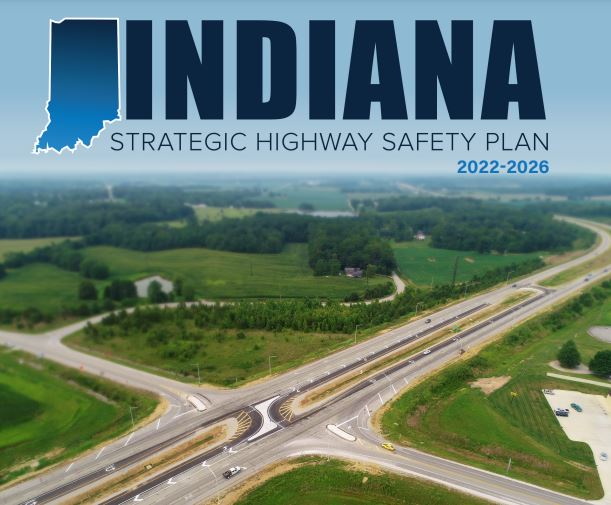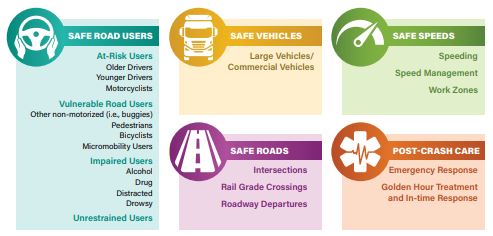May 2023
INDOT’s Traffic Safety Office works hard to minimize crashes that result in serious injury or death. Part of the office’s efforts to minimize traffic injuries and fatalities is the Indiana Strategic Highway Safety Plan (SHSP), produced by INDOT along with other state and local agencies. INDOT and its partners recently revised and updated the plan.
“The purpose of the plan is to identify critical highway safety problems as well as find opportunities to save lives and reduce suffering and economic loss resulting from traffic crashes,” said INDOT Traffic Safety Manager Mike Holowaty.
The SHSP steering committee analyzed 10 years of data, focusing on crash outcomes, contributing circumstances, manner of collision, and users involved. The analysis led to defining the road users (young drivers, old drivers, motorcyclists, pedestrians, etc.) and circumstances that call for safety strategies. Committee members also examined the number and percentage of total collisions, fatalities, and injuries over time to figure which trends are improving and where increased efforts are most needed.
The previous SHSP, created in 2016, listed a dozen emphasis areas. The new plan reduces that number to five (safe road users, safe vehicles, safe roads, safe speeds, and post-crash care) but adds more action plans. There are now 11 action plans regarding: vulnerable users, younger and older drivers, impaired drivers, occupant protection, commercial motor vehicles, roadway departure, intersections, rail-highway grade crossings, speeding, work zones, and post-crash care for road users and incident management partners.
“These action plans have various strategies ranging through the four E’s: enforcement, education, engineering, and emergency response,” said Holowaty.
Each action plan names leaders (INDOT, Indiana State Police, etc.) for each step, description of the action recommended, the output measure, the output measure source, and timeline.
To view the revised SHSP, click here.


